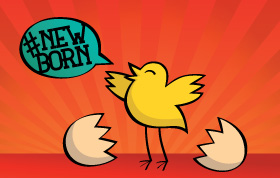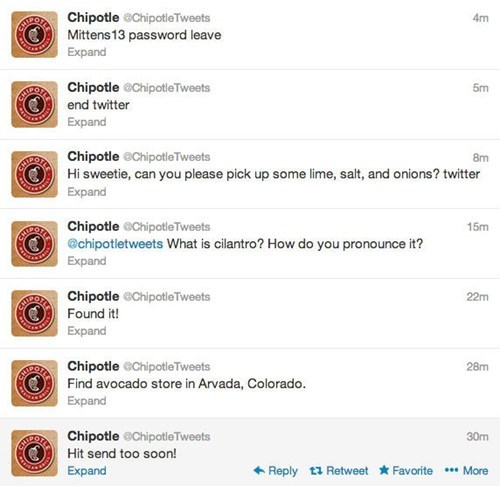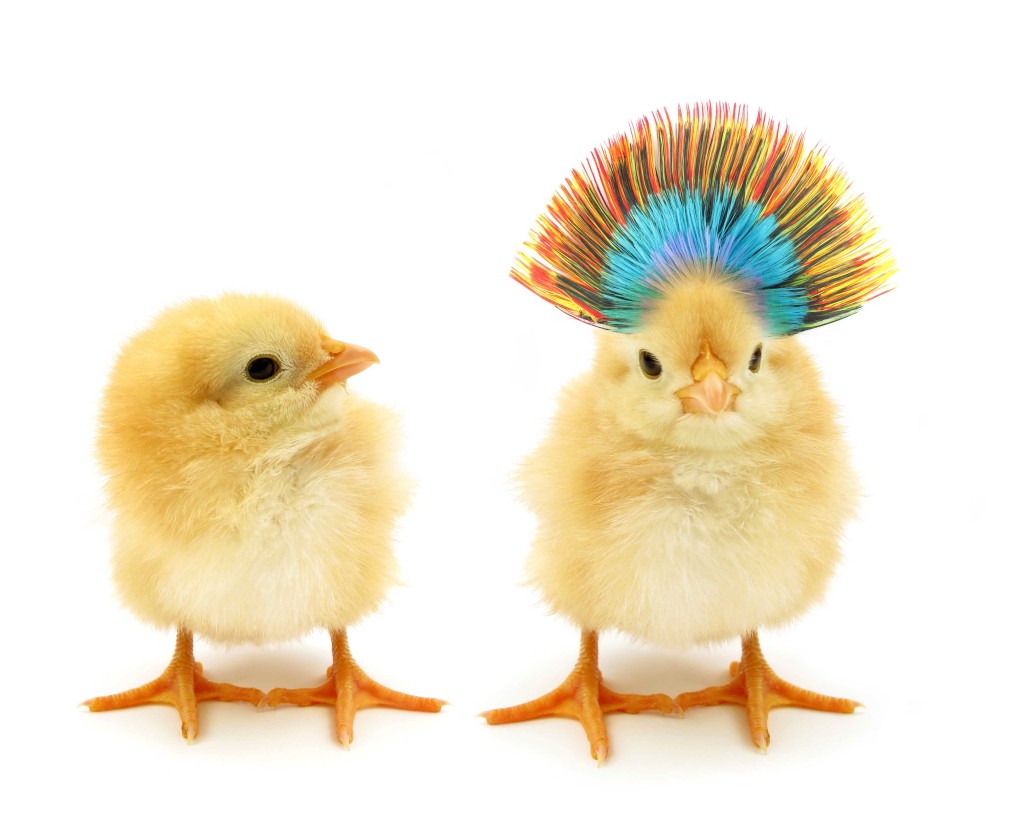
Twitter launched in 2006. It now has 554,750,000 users and is one of the top 10 most visited Internet sites. But working with clients on social media and chit-chatting with people outside of work, I’ve noticed that by far, it’s still the social network that people have the most apprehension about. I have very social-media-savvy friends who Instagram every damn thing, but ask them about the #2 largest social network and you get, “Ohhhh I’m not on Twitter…”
I think a big part of the hesitation about Twitter is the stereotype of people tweeting what they ate for lunch while sitting on the toilet. Yes, there are still plenty of tweets about people’s mundane daily activities. But increasingly, Twitter is where people go to get news, find out what others think about current events and connect to people who share the same interests. Twitter is what’s happening right now. And depending on your brand, it could be a better fit for connecting with your audience than Facebook or LinkedIn.
Twitter is not hard, or scary, and it’s difficult to mess it up. I mean, don’t do this:

From Failbook http://cheezburger.com/7689090816. Chipotle faked this Twitter fail. It was lame.
But everything on Twitter is ephemeral—the average lifespan of a Tweet is just 18 minutes. Even better, you can just dip your toe in. It’s totally acceptable—even encouraged—to just hang out at first and listen to what other people are saying.
So if you think Twitter might be a good tool for your business, here’s our easy guide to how to get started on Twitter. Set up an account, hang out for a bit and soon you’ll be tweeting and retweeting with the best of them.
1. Lock down your Twitter handle.
Your Twitter handle is your Twitter username. Hopefully, people will be using your handle to mention your company all the time, so we want to pick something logical and memorable. Our Twitter handle is @batesmeron. We have a unique company name, so it was easy to get the Twitter handle we wanted.
However, if your company name is a proper noun, like Puppies, or something more straightforward like Fitness Experts, you might find that your desired handle has already been snatched up. You might have to be a little creative.
Just be careful not to get TOO creative. 
Using our imaginary friends at Fitness Experts as an example, @fitnessexpertschi would be a good Twitter handle. (It even adds some value in telling you where the company’s located.) @thefitne$$Xpertsllc48 is too hard to understand.
Something else to consider: length. When people mention your company on Twitter, your Twitter handle counts toward the 140-character limit. You can only use 15 characters max, but keep in mind that less is more.
2. Create a profile picture.
For humans, this step is easy. Find a non-terrible picture of yourself, and crop it to fit a little square. Fini!
Brands have it a little harder. Logos are the obvious choice, but in our own experiences on Twitter, we’ve found that few people want to connect and chat with a logo. People like to talk to people, so a best practice is to emphasize the human element of your brand.
We chose to use the images of the two writers that update our account (hey, it’s me!) to represent our brand on Twitter.
Our friends at EnMast do a great job of this as well. Their Twitter profile picture is three of their authors, plus their brand logo.
Another important consideration to take into account is how well your profile picture will show up. Twitter profile photos are tine-eeee, so use as little text as possible and select simple, uncluttered images.
3. Start following.

To get the ball rolling, you’ll want to start following a group of people. As a business, clients and partners are a natural place to start.
You’ll also want to follow other leaders in your industry, which will funnel news and hot topics into your Twitter feed. Look for the Twitter presences of trade publications you read, websites you visit and cool people you’ve met at trade shows and seminars.
Twitter will recommend people for you to follow. There are also tools, like WeFollow, that you can use to find interesting Twitter accounts that relate to your business. Or, you can check out the “Following” lists of Twitter users you admire to find follow-worthy folks.
4. Listen.

Don’t feel pressured to start tweeting immediately. In fact, it’s better to start out by reading the tweets of all those people you just followed. Spending time “listening” will give you an idea of the kind of content you like to read—and thus, the kind of content that you should share from your account.
Listening will also help you figure out the basic etiquette of Twitter. You’ll notice things like:
- When people share links, they often give credit to the Twitter account that created the content.
- You want to use hashtags so people who are interested in a topic can find your tweets, but too many hashtags makes your tweet look like a hot mess.
- It’s annoying when Twitter users push out all their tweets in a row. No one likes a Twitter feed takeover.
- If you want to have a more private conversation, put the person’s Twitter handle at the very beginning of your message. Only people who follow both of you will see the tweets in your conversation. If you want to have a completely private conversation, send a direct message.
This is the kind of stuff that’s hard to pick up on when you’re reading articles about Twitter but becomes second nature when you actually start playing around with the network.
5. Start sharing great content.
You have a handle, a picture, people to follow (and hopefully some followers). You’ve gotten a good feel for how Twitter works. Now, it’s time to start sharing.
You should share both content you create and content you find. Sharing your content will let you demonstrate your expertise and introduce your offerings to a new audience. Sharing other people’s content will show that you know your stuff and are a source for great information.
You should also spend time responding to people. I established @melaniecdavis in 2008, and I still get excited when people reply to my inane ramblings. Replying is a great way to connect with people, especially clients and potential new ones. If you can’t think of anything to say, you can always retweet, which is also always much appreciated.
That’s it! You’re officially up and running on Twitter. Of course, there’s lots more you can do to get the most out of your Twitter presence—setting goals, being consistent, tweeting the right kind of content at the right times. There are tons of resources to learn how to do those things, and we’ll write more on those topics in the future, too. However, just getting out there is the biggest hurdle. Sign up, upload a picture and you’ll be on your way to becoming the next Twitter #success story.











